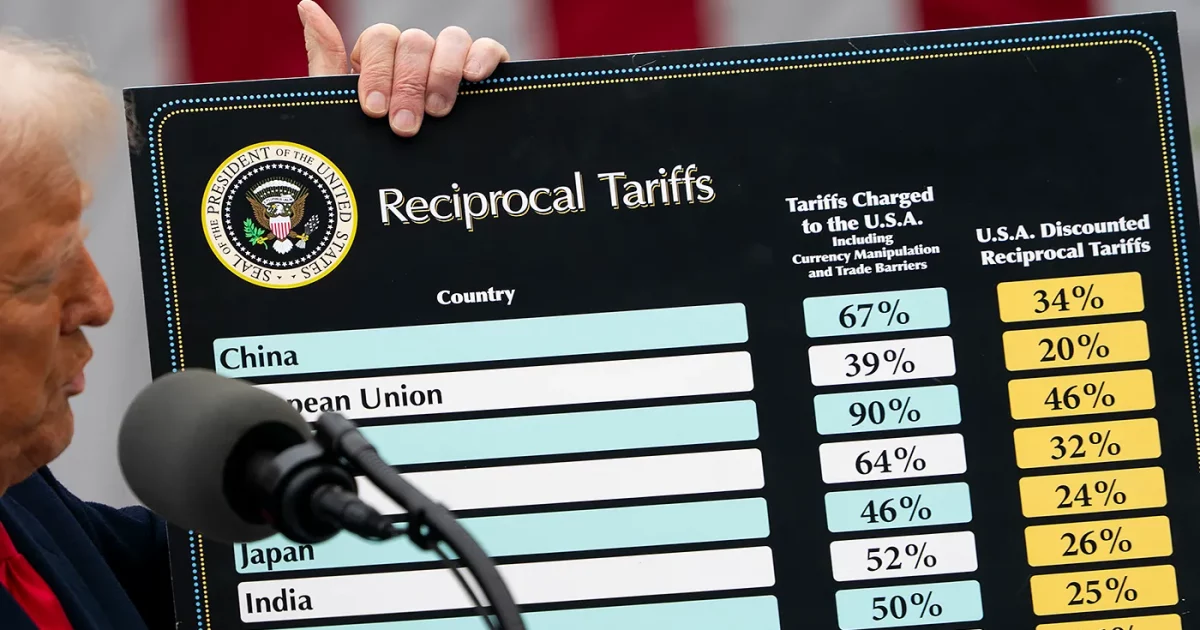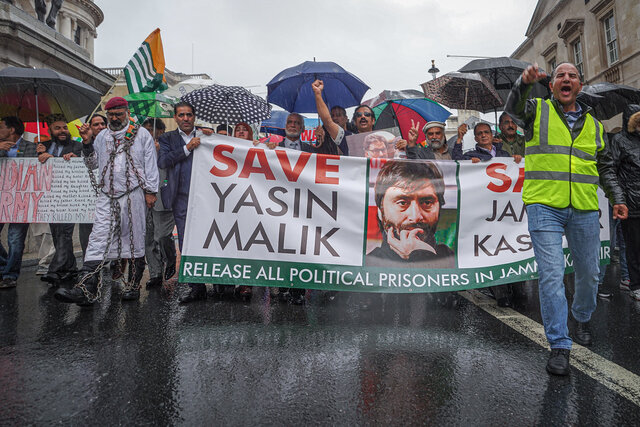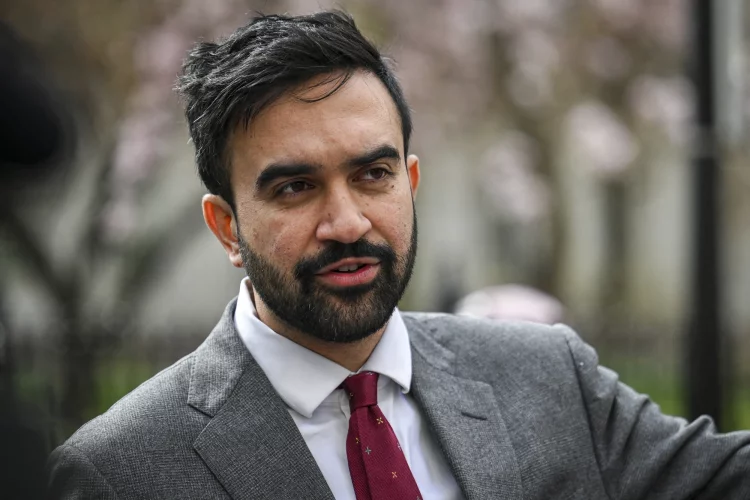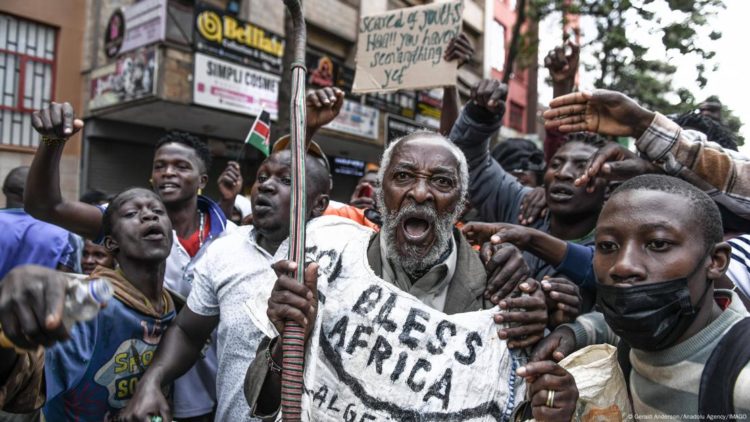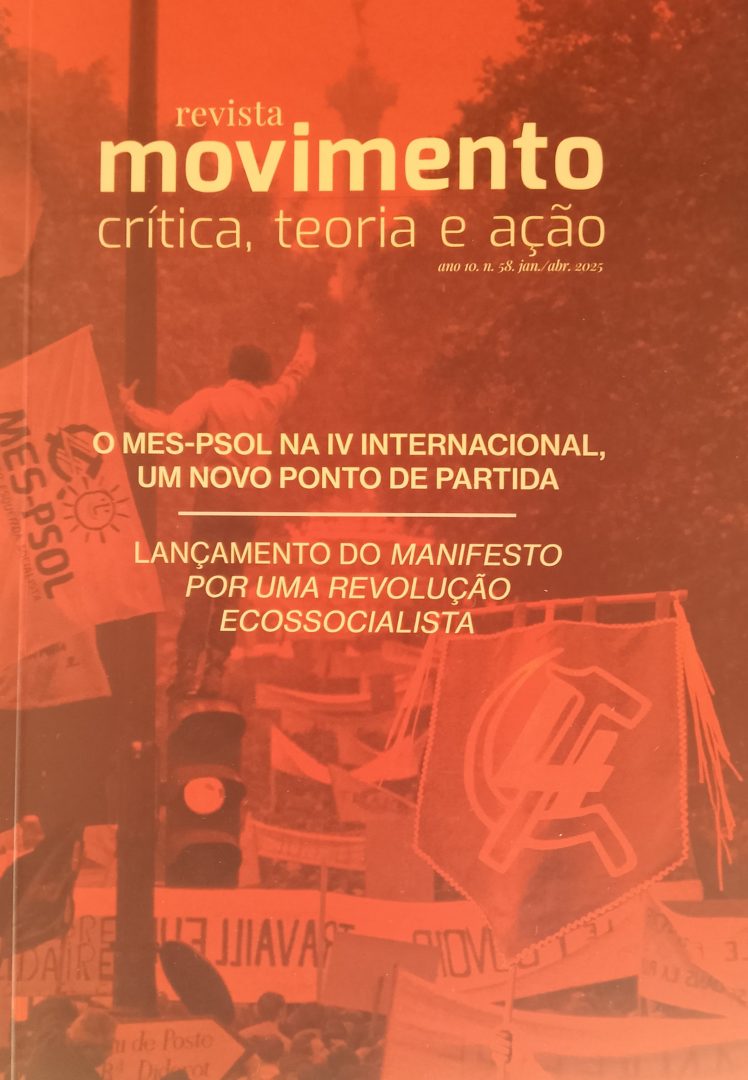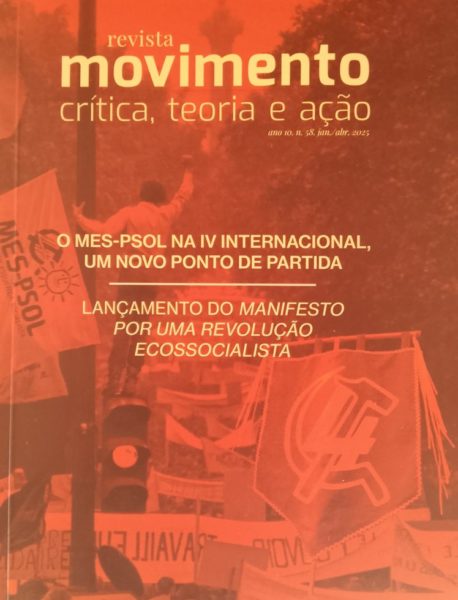Trump’s Tariff War and the Crisis of the Post-Bretton Woods Order: An Interview with Paulo L. dos Santos
From a critical and Marxist perspective of international political economy, Paulo dos Santos contextualizes the meaning of Trump’s tariff policy in the global landscape
In this interview with Victor Luccas for Revista Movimento, Paulo L. dos Santos, economics professor at the New School for Social Research, analyzes the recent increase in trade tariffs imposed by Donald Trump as part of a deeper process of exhaustion of the post-Bretton Woods international order.
Victor Luccas: First of all, I’d like to ask you to introduce yourself so that the readers can get to know you and your work.
Paulo dos Santos: I’m a mathematical political economist, working as associate professor of economics at the New School for Social Research. My primary area of current research involves drawing on information theory to develop new, non-reductionist approaches to statistical analysis of socioeconomic systems, and new measures of inequality in economic outcomes. In previous work, I have engaged with the distinctive nature and content of banking in contemporary capitalism, the problems of international monetary functioning and reform, and topics in formal expressions of Marx’s economic thinking. My work is ultimately animated by a critical appreciation of Marxism; one that sees in it not a set of ready-made answers, but a worldview and conceptual toolkit that leads us to ask the right questions about our world. All truly important economic truths are irreducibly social, deeply imbued with class content, historical, and changing; as must be the concepts, methods, and aims of genuinely emancipatory scholarship.
Victor Luccas: Could you give us a general overview of the current state of the U.S. economy and explain how this broader economic and political context led Trump to adopt higher tariffs on foreign trade?
Paulo dos Santos: I think the best way to understand the chaos Trump set off last week isn’t so much through the immediate economic situation in the U.S. The only way to understand what is actually going on with Trump’s move towards protectionism in a more belligerent foreign policy stance and all of these other things that are roiling world markets, the way to understand this is to put it against the context of a longer-term series of problems with what some of us have called the post-Bretton Woods order. This is not about the most recent business cycle, or the recovery from the COVID episode—unemployment and then recovery. This is, fundamentally, a reflection—expressed in different ways by different actors of different classes—that the project of the past 50 years, of internationalization and liberalization of labor markets and financial markets, has worked for some, but not worked for many.
And you have a political configuration here right now that’s actually tricky, and we can get into that more in your further questions, cause I see that your later questions are actually very good. Especially your last question, that’s the one I want to dwell on the most. That’s the one about the UAW, and Shawn Fain, and the workers’ movement—that’s really the question.
So, I guess my answer to this first question is that this is not so much an issue of the immediate situation with the U.S. economy. It’s more long-term. It’s a reaction to deeper issues, and a broader sense that the U.S. economy, strategically and industrially, is at a crossroads. And we can get into that with subsequent questions.
Just to emphasize this again and again: for Marxists, and also for anybody with a radical understanding of international political economy, I think we need to understand the current juncture as the exhaustion of the world order that began in 1971, and the process that’s unfolded over the past 50 years.
Victor Luccas: What are the impacts of tariffs on the global economy, considering that China has been responding to the United States, and now the tariffs between the two countries are over 100%?
Paulo dos Santos: Let me put my economics hat on first, and then I’ll put on a different hat. So, from a more technocratic standpoint, we need to distinguish between the short run and the long run. And then we can make some broad statements.
In the short run, it’s incredibly disruptive. I mean, we’ve had three, four decades of ever-increasing and deepening interdependence, not only in terms of trade but also in terms of production chains. We live in an international economy that has unprecedented levels of integration—not just through financial flows, or the movement of goods and services, but also through production itself. So when you’re talking about not only introducing tariffs, but also mediating a series of prices at every point in the chain, and adding a great deal of uncertainty around those tariffs, you’re dealing with a very, very significant short-term disruption.
Investment—especially large, long-term investment commitments—is likely to fall over the coming period. Consumption plans, and certainly demand for consumer durables, are going to decrease. We should expect prices to rise. And—let me put it differently—the odds of a short-to medium-term stagflationary episode, certainly in the United States if not more broadly, are actually pretty high.
Now, in the long run, that’s a different question. One of the things we learn from the history of economic thought—and from economic history itself—is that agents, economies, and institutions adjust. But we should never underestimate how real and significant it is that a more interdependent and specialized global economy raises productivity and lays the possibility for higher living standards across the board – possibility. A retreat from that, if that’s what we’re seeing, will be felt. Even as economies adjust back from the initial shock, that retreat will have long-lasting effects.
But honestly, I find myself thinking primarily in political terms when I try to understand how this is going to unfold—because the current short-term economic shock is so dramatic that it’s likely that something somewhere in the system will get political, and then we will enter a different period. Let me say that another way: it’s become pretty clear that the regime that evolved over the past 50 years—of integrated trade, investment, production, domestic liberalization of labor and financial markets, and pressure on governments to adopt policies ultimately favoring capital over labor—that overall regime just doesn’t work anymore. And it doesn’t work anymore for two big reasons.
First, there’s the failure of capitalism, as it currently exists, to develop international governance structures that can manage the geographic changes in global production. What we’re seeing now is a backlash to that failure—a failure to create, implement, and maintain a coherent global vision for how production should be geographically distributed, and how to manage the imbalances that come with that.
The second reason has to do with developments in the United States, which your later questions touch on. There’s this increasingly common view—across both major parties—that the United States “lost” globalization, while China has gained. That perception threatens the U.S.’s hegemonic position in the global economy. Both parties are now laser-focused on this, and that, to me, is a very reactionary reaction.
It reminds me of that story—the rich kid on the block who owns the ball. When his team is losing, he grabs the ball, goes home, and ends the game. That’s kind of where we are. The U.S. establishment is shaping political narratives and programs around this fear of hegemonic decline, and they’re tying that into another issue that’s gone wrong for the U.S. under globalization: the loss of well-paying, stable, industrial working-class jobs.
For 40 years, those jobs have been gutted as global manufacturing was geographically reconfigured. That led to a significant backlash, and now elements of the U.S. elite—especially those focused on geostrategic aspects of globalization—are trying to turn that into political movements. They’re trying to rally working-class support for what are essentially efforts to reassert U.S. economic and political dominance. I think that’s where we are right now.
I can explain how different proposals from each party are playing out. Trump gives a very old-school, isolationist, “America First” version of this project. Meanwhile, the Biden administration gives it a more Atlanticist, embedded liberalism spin. It’s like a postwar framework—where the U.S. is “first among equals” in a multilateral imperial system.
But make no mistake: the economic thinking that shaped the last years of the previous administration wasn’t just about protectionism—and we should talk more about that in your final question. It was protectionism with clear national security prerogatives. It centered on defense and strategic industries. The idea is that to secure good, well-paying jobs, you have to essentially rearm and reassert industrial power.
We know how dangerous this is politically. And what’s particularly worrying—and I know this goes beyond your question, but I’ve been thinking about it quite a bit—is the recent move by European elites toward a more assertive, joint foreign policy, independent from the United States. They’re not only pursuing rearmament in general, but they’re focusing on rearmament grounded in domestic industries.
This notion of “war time Keynesianism,” that people have started to talk about, is also going to come up very strongly in Europe. And I think over the next period, for political strategy for the left, this is going to be incredibly important.
I know I’m jumping across topics, but there are so many threats here. We’re at a juncture where we certainly know what can no longer be as it has been, but we don’t know what will be. And there are different people trying to push things in different ways.
Victor Luccas: We have seen on your social media that you said complaining about the U.S. trade deficits with other countries is like complaining that the working class of the world produces goods and services for the United States without receiving much in return. Could you explain why is that so?
Paulo dos Santos: One of the things that the post-Bretton Woods regime—and what people have come to call globalization—was actively seeking out, especially among U.S. elites, was a way to engage cheaper labor in different parts of the world. And there are two modalities you can use, whether you’re sitting in the United States or, for that matter, in Germany, France, or any of the big metropolitan centers.
One is immigration—legal or illegal—and we can talk about the issue of the so-called “illegal” status of immigrants as something that’s socially constructed. It’s a mechanism to create a second tier, a second class of non-citizens within the working class—people who have no rights, no capacity to organize, no political voice. It’s a way to enforce not only low pay and precarity, but also to maintain the ability—depending on the business cycle—to send people back. That’s one modality.
Milton Friedman was very clear about this: the issue with immigration wasn’t just about bringing people in, but about making sure they came in illegally, so they would have no rights. That way, you create what we used to call, in older terms, a “reserve army” of labor.
The other way to access cheap labor is by exporting parts of your production chain. That means integrating workers in regions where wages are lower into your productive systems.
There’s something very interesting here, especially when you connect it to the role of the U.S. economy—and the U.S. dollar in particular—in the post-Bretton Woods era. That system allowed the United States to appropriate the benefits of cheap labor both domestically and internationally.
The international side of this, of course, is tied to the structural current account deficit the U.S. has been running for more than 50 years. And the ability to sustain that deficit is closely tied to the role of the dollar as an international reserve currency.
Then you have the issue of immigration. And the irony here is that Trump is, in many ways, lashing out against these two very pillars—structural trade deficits and immigration.
What people need to understand is that both immigration and trade deficits have actually been central to maintaining political stability in the U.S., even as economic inequality has widened. Historically, in many cases over the past 30, 40, 50 years, rising inequality has been politically moderated by access to cheap goods. Goods in the average wage bundle have remained cheap, both because of imports, enabled by current account deficits, and because of global labor integration. That has allowed inequality to grow while still maintaining political stability.
The way I’ve tried to put it more recently is: in many ways, Trump is biting the hand that has fed the working class he and his people are exploiting—fed them, in this case, with cheaper goods and relative material security. It’s not a very elegant formulation yet, but I’m working on a punchier way to express it. There’s a certain paradox there, some of the gyrations we’ve seen, some of the chaos of the past ten days, follow from the arguments within the polity where some people say: “Dude, what are you doing?”
So, two days ago, Trump started talking about exemptions from deportation for farm workers because he’s coming under pressure from people who run capitalist farms. They’re saying, “Listen, you can’t deport my guys because I literally can’t find anyone else to pick my crops at these wages.” So that induces a certain chaos into the process.
Victor Luccas: Trump has been making new imperialist offensives—against Gaza, the Panama Canal, and even Greenland. We’d like to know what’s the relationship between these tariffs and this broader imperialist politics? And how is it connected to the mass deportations that are happening?
Paulo dos Santos: I wouldn’t make too much of the connection, although there certainly is one. Again, if we look at the current situation less through the prism of an immediate, conjunctural problem defined by the specific politics of a given administration, and instead see it as the exhaustion of an international regime, then we gain a slightly different perspective on links like these.
And here’s the thing: let’s not forget that Trump’s first Secretary of State, Rex Tillerson, famously described him as a “fucking moron.” Let’s not lose sight of the element of idiosyncrasy in what we’re dealing with here.
But let’s also try to focus on the more structural elements. Trump has always been a very old-fashioned—and frankly not very sophisticated—isolationist. This is a threat in American politics that reached its height in the 1930s, especially when it looked like Europe was about to go to war. Some of these people in the U.S. developed a certain affinity for the Nazi regime in Germany, and they did not want the United States to get involved.
But this runs deeper than that. One thing that’s interesting to think about is this: if you go back to my earlier point, a lot of what major political parties in the U.S.—and also in many places in Europe—are putting forward different forms of the same alliance between working-class disaffection with the results of globalization, on the one hand, and the sense of elite anxiety over the rise of China and making a coalition between these two. And then there are different proposals on how to do this.
The development of the ethno-nationalist right, which we’ve seen in Europe and which Trump represents here, in many ways, to me, represents an effort to tap working-class discontent at the failures for them of globalization, into a project that aims socially to roll back all of the social gains that the working class, women, minorities, and others have made in the course of the 20th century. They want to take the sociopolitical clock back to 1914.
So, we shouldn’t be surprised that someone like Trump—who’s positioning himself at this particular moment in history—sounds like an old-school imperialist from the early 20th century when he talks about annexations. He sounds like somebody from the time of Teddy Roosevelt. And I don’t think that’s accidental.
As different forces are trying to steer this new period into different directions, some of that steering is ultimately aiming to take us back to 1914. That’s the prism through which we can understand the connection—it’s a nationalist backlash, putting forward this old-fashioned sense of imperial glory and expansion as a prop to line up a very discontented, increasingly poor, and unhappy working class and broader populist base behind its elite.
It’s very cynical and we’ve seen it before.
Victor Luccas: You’ve also talked about farmers who are discontent with Trump’s policies. The New York Times has also criticized these policies, saying they disrupt global commerce without any clear strategy. But in the past few days, we’ve seen some investors making significant profits in the stock market. So, it seems that there’s some division among capitalists—that there are differing opinions. How do you see capitalists positioning themselves in relation to all of this?
Paulo dos Santos: I would advise people not to pay too much attention to the stock market right now. It’s hard to keep the timeline straight, but on the day Trump announced the 90-day pause, the stock market initially recovered—before losing again. Apparently, one of the reasons the stocks indices moved up so spectacularly was that many financial market players engaged in bearish bets— bets that the indices were falling. But when the 90-day suspension was announced and prices went up, those who had entered short positions got squeezed. So, there was an aspect not exactly of anomaly, but basically when markets get volatile funny things happen. So I’d just be very guarded about drawing a lot of conclusions from volatility in markets, because it can be the reflection of “funny things”.
In the end of the electoral cycle last fall, before the elections, something happened that was quite unexpected. It was the fact that we saw a number of tech and Wall Street leaders swing very hard in favor of Trump in the run-up to the election in November. People have offered explanations as to what was behind it, if it had to do with a desire for lower taxes or lighter regulation. But it’s become very clear that a number of those people are deeply unhappy with what has happened. They see that whatever affinity they have for Trump, this is a straight up macroeconomic mismanagement of the worst kind.
There may also be some elements of venality and corruption involved. I don’t know if you heard, but just before the announcement of the 90-day suspension of tariffs, some people made huge bets that the indices would rise—and they ended up making literally hundreds of millions of dollars. So, someone clearly had prior knowledge that the announcement was coming. People are not very happy about it, people in power. As soon as it happened, The New York Times wrote about it on its front page.
What I told you about not looking in the stock market is important, but what you always should be looking at is the bond market. We are all familiar with the Brazilian situation, and we know how this goes: when yields start rising, that is telling you that capital is betting against you and moving somewhere else.
So a lot of us were looking last week for any kind of indication—not only that U.S. bond yields were rising (and they were at times), but we kept looking at indications of somewhere else in the system where the yields were dropping. And last Friday, it finally happened. We saw sustained upward pressure on 10-year U.S. Treasury bonds, but at the same time, a correlated drop in yields on 10-year German bonds.
Even without knowing who was doing the selling or why, it was clear: market participants were shifting reserve holdings from dollar-denominated 10-year sovereigns to euro-denominated German sovereigns. That focused minds around the world, because that is the kind of event that signals an exhaustion of the world’s willingness to put up with this kind of instability while still relying on the dollar as the global currency.
That doesn’t mean the dollar has lost its position, but in my lifetime, it’s the closest sign of significant erosion of that role—and that’s something U.S. elites are definitely concerned about.
Something to keep paying attention to is: to what extent are some sectors of U.S. capital still lining up behind the tariffs and the administration, and which elements are beginning to say, “Listen, we can have policy disagreements, but anything that threatens the dollar’s position is a problem”? I think that’s going to be an interesting story.
Victor Luccas: Some unions made statements defending certain types of tariff hikes. They’re arguing that these measures will protect U.S. industry and create more jobs and employment opportunities for the working class. What do you think about this perspective? Could the working class actually gain anything from these tariff hikes? And how should the working class respond?
Paulo dos Santos: Let me say this: this is an important question—especially from the perspective of domestic politics. Now, the issues of the international system, the role of the dollar, the global architecture of money, finance, trade, and production—those are all important, and they definitely set the broader context. But if we’re thinking domestically, this is a very, very important matter.
It’s pretty clear that one of the major sources of discontent among the working class in the U.S., the U.K., and Western Europe has been deindustrialization. Their elites pursued a project of internationalization that fundamentally reshaped the economic structures of the areas where people lived and worked—and they did it without any real plan for what would come next. There was this idea that “the market would take care of it,” or that people could just “retrain,” “retool,” “learn how to code,” and everything would be fine. But as many have pointed out in this country since the 1980s, the market doesn’t do that.
To me, the great lesson of the past 30 years is China’s rapid and successful industrialization. That’s the positive side of globalization—real, tangible gains in living standards. Something like 700 million people were lifted out of poverty. And the lesson there is that even in a capitalist world, it takes a tremendous amount of state power—and a deliberate subordination of capital—to make things potentially work for ordinary people. It takes real institutional capacity to formulate a plan and to force private capital to operate within that plan.
The Chinese government, through very particular historical circumstances, has been able to do that. And it’s not just China. You can see similar stories in places like South Korea and Taiwan. They’re all different, of course, but the common thread is state capacity—the ability of the state to formulate and execute industrial policy.
Where am I going with all of this? There is no doubt in my mind that the United States needs an industrial policy. Britain needs an industrial policy. The idea that you can just open up to the world while capital races to find cheaper and cheaper labor—that you can have this “race to the bottom”—and somehow expect that to work out economically and politically, that’s just crazy.
And it’s also clear that what the Trump administration is doing is not the kind of coordinated, coherent strategy that could actually build new industries with the kinds of jobs that sustain living standards and the kind of thriving communities that once you had across the industrial areas of this country.
So while it’s understandable that someone like Shawn Fain of the UAW, and others, might welcome some of these moves, the truth is that, economically, it’s not going to work. What would be required to actually reorient industrial development in this country is much bigger than what’s being proposed.
What is the Trump administration really putting forward? Tariffs, tax cuts and maybe the closest thing to industrial policy is cutting regulations and making energy cheap. That’s not an industrial strategy. Especially not in a world where, on top of everything, they’re also cutting public investment in research and development. That’s not how you build long-term, competitive industries.
So yes, we can critically engage with the unions’ economic reasoning for supporting tariffs. But I think there’s a deeper, more fundamentally political issue at play—and that’s the question of class independence. When has it ever worked out for the working class to define its position simply in support of the agenda of a capitalist party—regardless of its particular flavor? It just doesn’t work. Whether your goal is to improve conditions under capitalism or to lay the groundwork for moving beyond it, history shows that working people only make progress when they organize independently—when they resist the pull to align their interests with whatever politician is selling a nationalist or reactionary vision.
That’s the kind of conversation we need to be having: What is in the long-term interest of working-class people in this country? Is it defending an auto industry that’s being outcompeted by others because other countries do have coordinated industrial strategies?
Maybe in the very short term, sure. But not in the medium or long run—and politically, it’s not a good direction at all.
Victor Luccas: Are there any other aspects of this issue you would like to discuss?
Paulo dos Santos: The real game here—the real international question, and the one that directly speaks to the concerns of working-class people and their allies around the world—is the challenge posed by this transition. At its core, it’s about the international monetary system and, more broadly, the question of international economic governance.
In many ways, what we’re seeing is a regime of international economic governance and monetary management that has evolved over the past 50 years proving to be grossly inadequate for the needs of a globally integrated, planetary economy. We’re going to have to start thinking about new ways to organize how national economies interact with one another. What are the institutional modalities that could govern that interaction? And can we envision monetary arrangements that are more conducive to convergence in productivity and living standards internationally—without creating domestic dislocations, without leaving working-class people in the U.S. and Europe behind?
How can we have serious conversations about raising living standards in East Asia, Latin America, and Africa, while also maintaining them in the global core—and doing so in a way that is ecologically responsible? These are enormous challenges. And for the past 50 years, the default answer has been: “Just let the market figure it out—maybe add some smart policy tweaks here and there.” But it’s not working. It doesn’t work.
So what does work? That is the big question we gotta be asking ourselves right now.
